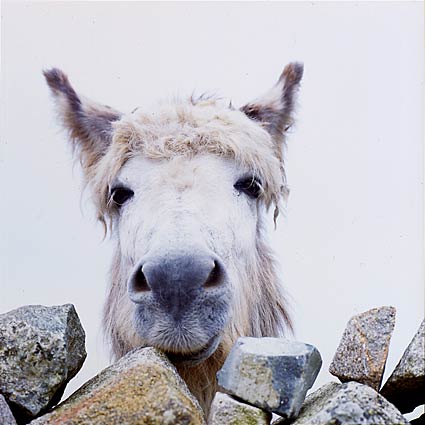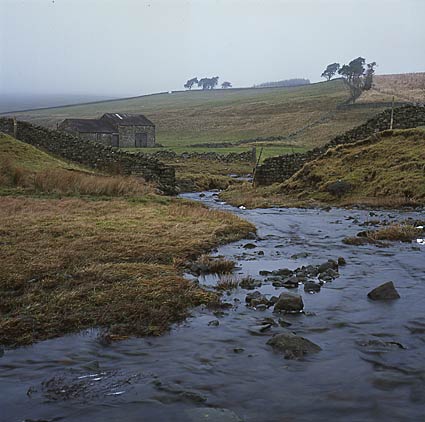

As is made clear from the home page of this site, I am working in two photographic fields: wedding reportage and landscape.
A weird combination, or so it seems. Some people ask how I manage to do both. Making numerous pictures at a wedding party is quite different from the contemplative art of landscape photograph. Think party venue at night versus early morning mountain scenery.
And different they are, in many respects: technique and materials used, marketing, workflow, purpose. But to me they are certainly not mutually exclusive! For a landscaper there is lot to learn from reportage work and a wedding photographer could do worse than developing the vision of a landscape man.
In this article I explore the differences and
similarities of both genres. I highlight about the mutual influences in my photography.
I hope you will enjoy reading my experiences and get inspired to undertake several genres.
The differences between these two forms of photography are obviously numerous: technically, aesthetically and in terms of business. This all has to do with the end product the photography is to deliver. A wedding album is very different to a framed landscape print - each has its own purpose.
First, there is the choice of film: for weddings I mainly use Fuji NPZ 800 negative film (rated @ 500). This film is great in low light and indoor situations. Negative film is forgiving for exposure inaccuracies, which is good during the rush of events at a wedding. For landscape work I use Fuji Provia 100F transparency film. For this kind of film precise exposure is the key-word. Low light and indoor photography are impossible to do without a tripod, dictating another workflow.
For the wedding formals I use the same camera system as for landscapes: a Rollei 6008i. Most wedding work though is done with a 35mm SLR - my trusty Pentax MZ5n and a Metz 45CL4 flash-unit. Another format, another workflow - quick, spontaneous, zooming in and out.

Using the Rollei I decide whether to take a picture or not with the camera on tripod and viewing all of the screen (and subject!) for the best composition. In the flow of events during the wedding ceremony or party, there is no time for such pondering and changing of compositions. Just take the photograph at the moment and decide later if it was a good or just a mediocre shot.
The most important difference though is not in the workflow, but in the purpose of a photograph. Representing a landscape is not the same as documenting an event. It has to evoke other reactions with the viewer. A good wedding album will bring back happy memories and move by showing the emotions of the day. Good landscape photography can be emotional, but can also be educational or just visually pleasing. It is not about memories (this is in my opinion where tourists' photos differ from 'serious landscape photography') - even if I as a photographer certainly have memories when viewing a landscape photo I have made.
And at last: the business of a wedding photographer is totally different from a landscape photographer. The type of client is different (people looking for a photographer for one of their most important days in life versus photo editors or fine-art buyers) as well as the kind of contacts you have with them.
It is quite easy to start in wedding photography, as keen amateurs are often asked to take a few shots at a friends wedding. Getting a contract with a stock agency or gallery or selling many photographs to magazines is far more difficult.
Nevertheless, the genres also have a lot in common!
The 'rules' of aesthetics are the same for both genres - though a mediocre composition can be forgiven if the emotional content of wedding picture is good. The vision a photographer needs, is therefore the same as well. Using the light, form, perspective, structure and texture - all apply to the entire field of photography.

The concentration needed for seeing and making good photographs is the same as well. The article about looking, seeing, reacting, showing could have been written about wedding reportage with just a few minor changes. Being aware of what is visually happening and capturing just that.
Weddings are a good exercise in avoiding photo-hesitation. Should I take a picture here or wait for the better light? Or should I walk another mile for a better viewpoint? Or indeed should I come back some other day when the circumstances are better.
At a wedding you simply have to make photos. No other day, no waiting for better light. Just look, see and shoot. The pictures have to cover the entire day and together form an album. So you cannot be too picky about what and what not to shoot.
On the other hand, landscape photography trains one to wait for the best moment, not to be overwhelmed by the subject but work hard to get all details at their best. A good thing for wedding formals as well!
There are lot of things I have learnt during my landscape work that I can use at weddings - and vice versa of course. The most obvious: the use of landscape as a location for wedding formals. I think I am more aware of the landscape side of a wedding location than most other 'people' photographers, who often only see the couple and not much else.

Composition and the use of light are of prime importance for landscape work - and I use my experience for wedding work as well! Unconsciously I always evaluate the surroundings, the possible use of perspective, special light or whatever. It is important of course though to stay in touch with the couple - discuss ideas and shots, make them feel relaxed. It is their day after all!
Similarely wedding work influences my approach to landscape photography. Documenting what is happening, the feelings (of the subject and of those who are to view the pictures), the relationships between people, their surroundings, their personal history - as a wedding photographer does - is also a very interesting perspective for a landscape photographer as well. The landscape is always linked to the people, animals and plants that live in it [ cf approaches in landscape photography ]. The landscape has a history and shows that. A landscape image can have many meanings for the viewer.
And weddings have taught me to work whatever the circumstances. Rain, bright sunlight at noon, ugly town halls, nervous people - I have to deliver the goods. And that is what I try to do in my landscape work as well. There is not such a thing as 'bad circumstances' - it is (almost) always possible to get some good shots [ cf light and landscape photography ]. I just have to work harder.

Both genres of photography compliment each other very well for me. Both of them give me a lot of satisfaction, as people (whether clients or not) like the results - me myself included! Because they are different, they help me to develop stylistically, they cross pollinate each other.
I am not the only photographer working in different fields. All combinations of genres have been done. I hope my story
inspires you to work on more than one genre as well. Be it macro, architecture, wildlife or weddings.
Of course, I am not saying that a close-up of a tiger with a bride in his jaws against the background of an industrial plant will always turn out great...

This article is written by Wim van Velzen, © 2003.
Comments on the article and photographs are welcome!The landscape photographs shown here and lots more are put in several portfolios! More wedding photos can be found in the wedding galleries.
It is also possible to order landscape prints or to use them editorially or commercially.